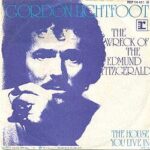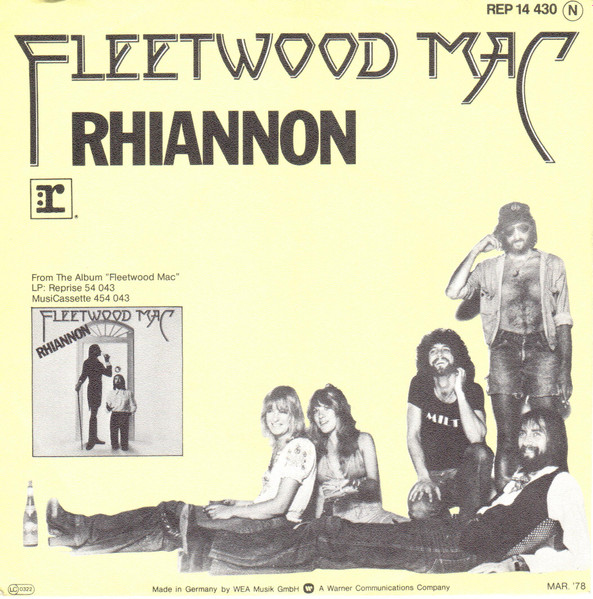 Gordon Lightfoot’s “The Wreck of the Edmund Fitzgerald” stands as one of the most haunting and enduring ballads in modern folk music. Released in 1976 on his album Summertime Dream, the song immortalizes one of the most tragic maritime disasters in North American history: the sinking of the SS Edmund Fitzgerald on Lake Superior on November 10, 1975. Lightfoot’s meticulous storytelling, combined with his evocative melody and understated instrumentation, transformed a contemporary tragedy into a timeless piece of musical narrative, blending journalism, poetry, and folk sensibility.
Gordon Lightfoot’s “The Wreck of the Edmund Fitzgerald” stands as one of the most haunting and enduring ballads in modern folk music. Released in 1976 on his album Summertime Dream, the song immortalizes one of the most tragic maritime disasters in North American history: the sinking of the SS Edmund Fitzgerald on Lake Superior on November 10, 1975. Lightfoot’s meticulous storytelling, combined with his evocative melody and understated instrumentation, transformed a contemporary tragedy into a timeless piece of musical narrative, blending journalism, poetry, and folk sensibility.
This song occupies a unique place in music history. It is both an elegy for the 29 men who perished aboard the Edmund Fitzgerald and a masterclass in narrative songwriting. Its combination of historical accuracy, emotional resonance, and haunting atmosphere has ensured its status as a cultural touchstone, not just in Canada and the United States, but worldwide.
Historical Context: The Edmund Fitzgerald
The SS Edmund Fitzgerald was a massive iron ore carrier, launched in 1958, and by the 1970s it had become one of the largest ships on the Great Lakes. On November 10, 1975, the Fitzgerald embarked on what would be its final voyage, carrying 26,116 tons of taconite pellets from Superior, Wisconsin, to Detroit, Michigan. A violent storm arose on Lake Superior that evening, with hurricane-force winds and waves reported to reach over 25 feet.
Despite the ship’s robust construction, it succumbed to the storm. No distress signal ever clearly indicated the vessel’s final moments, and all 29 crew members aboard—including Captain Ernest M. McSorley—were lost. The tragedy shocked maritime communities, the nation, and the world. Newspapers and television reported extensively on the disaster, but it was Gordon Lightfoot who transformed the story into a musical memorial.
Lightfoot, a Canadian folk singer-songwriter known for his evocative storytelling, had a gift for turning historical events into emotionally compelling songs. His journalistic approach—meticulously researching the ship, the crew, and the storm—ensured that the song remained faithful to the facts while imbuing it with poetic and emotional depth.
Writing and Inspiration
Lightfoot was inspired to write “The Wreck of the Edmund Fitzgerald” shortly after reading news reports of the tragedy. He aimed to memorialize the event in a way that honored the men who perished while creating a song that resonated universally. Unlike other disaster songs that focus on drama or sensationalism, Lightfoot’s version emphasizes human courage, loss, and the relentless power of nature.
The songwriting process involved careful attention to detail. Lightfoot studied official reports, survivor testimonies from other Great Lakes sailors, and contemporary news accounts to ensure historical accuracy. He incorporated specific details such as the ship’s cargo, the captain’s name, and the coordinates of the wreck. This approach lent the song authenticity and helped it transcend simple storytelling, creating a musical record of history.
Musical Composition and Structure
“The Wreck of the Edmund Fitzgerald” is structured as a ballad, a form traditionally used for storytelling. The song unfolds over a steady, almost hypnotic rhythm, mirroring the inexorable advance of the storm on Lake Superior. Lightfoot’s arrangement is minimalist, relying on acoustic guitar, subtle percussion, and bass to support his vocals. The instrumentation allows the narrative to remain front and center, emphasizing the lyrics and the story they tell.
The melody is haunting yet straightforward, evoking a sense of inevitability and melancholy. Lightfoot’s vocal delivery is calm and measured, reflecting the stoicism and courage of the sailors, as well as the quiet horror of their fate. The song’s refrain, “The ship was the pride of the American side / Coming back from some mill in Wisconsin,” anchors the narrative while reinforcing the historical and geographical context.
Lyrical Analysis
The lyrics of “The Wreck of the Edmund Fitzgerald” are remarkable for their balance of fact and emotion. Lightfoot includes precise details, such as the cargo, weather conditions, and coordinates, which give the song journalistic credibility. Lines like:
“Does anyone know where the love of God goes / When the waves turn the minutes to hours?”
highlight the emotional and spiritual dimensions of the tragedy. The repetition of motifs, such as the storm and the sinking, creates a sense of inevitability, while occasional rhetorical questions engage the listener, inviting reflection on human vulnerability in the face of nature’s power.
Lightfoot’s choice of perspective is also significant. The narrator is both observer and memorialist, guiding listeners through the event while honoring the courage of the crew. This perspective allows the song to function as both a historical record and an elegy, bridging fact and feeling.
Impact on Folk and Popular Music
Upon release, “The Wreck of the Edmund Fitzgerald” became one of Gordon Lightfoot’s signature songs, reaching number two on the Canadian charts and achieving significant airplay in the United States. Its success demonstrated the enduring appeal of narrative songwriting in a musical landscape increasingly dominated by pop and disco.
The song also influenced subsequent generations of folk, rock, and country artists, who recognized the power of historical storytelling in music. By blending precise detail with emotional resonance, Lightfoot showed that songs could educate, commemorate, and move listeners simultaneously. The ballad format, used so effectively here, became a model for other artists seeking to document historical events in song.
Emotional Resonance and Universal Themes
What makes “The Wreck of the Edmund Fitzgerald” timeless is its emotional resonance. While the story is specific to the Great Lakes and the particular tragedy of the Fitzgerald, the themes are universal. Human courage, mortality, and the unpredictable force of nature are experiences that resonate across time and geography.
Listeners feel the storm, the relentless waves, and the isolation of the crew through Lightfoot’s precise, evocative imagery. Lines like:
“And it’s been many a year since the Edmund Fitzgerald / Went down to the bottom of Lake Superior”
convey not just historical fact, but a sense of enduring loss, reminding listeners that human endeavors are fragile against the vast, indifferent power of the natural world.
Historical Accuracy and Research
One of the defining features of the song is Lightfoot’s commitment to historical accuracy. Unlike many narrative songs that take liberties for dramatic effect, The Wreck of the Edmund Fitzgerald carefully adheres to known facts. Lightfoot consulted reports from the U.S. Coast Guard, contemporary news articles, and eyewitness accounts from other sailors on Lake Superior.
This attention to detail adds credibility and gravity to the song. Every mention of cargo, weather conditions, or navigational detail serves to immerse the listener in the event, transforming the song into a musical document of maritime history. The combination of historical fidelity and emotional depth is part of what gives the song its enduring power.
Live Performances and Cultural Reception
While the song’s studio version is widely celebrated, its live performances have also contributed to its legendary status. Lightfoot’s live renditions often extend the storytelling, emphasizing the narrative’s emotional weight. Audiences across North America have responded with reverence, treating the song as a commemorative piece rather than just entertainment.
“The Wreck of the Edmund Fitzgerald” has also been referenced in educational settings, documentaries, and films about maritime history. Its lyrical accuracy and emotional resonance make it a valuable cultural artifact, teaching listeners about the tragedy while providing a deeply human connection to the event.
Influence on Other Artists
Lightfoot’s approach in “The Wreck of the Edmund Fitzgerald” has influenced countless musicians in folk, rock, and country genres. His meticulous blending of historical detail with emotive storytelling has served as a template for artists seeking to explore real-world events in song.
Bands such as Great Big Sea, folk revival artists, and contemporary storytellers in Americana have cited Lightfoot as an inspiration. The song’s focus on narrative, detail, and atmosphere demonstrates how music can serve both as art and as a record of human experience.
Musicological Significance
From a musicological perspective, “The Wreck of the Edmund Fitzgerald” is notable for its modal simplicity and rhythmic restraint. The steady, almost march-like tempo mirrors the inexorable movement of the storm and the ship’s final voyage. Lightfoot’s use of acoustic guitar and subtle bass lines maintains clarity and focus, ensuring that the listener’s attention remains on the story.
The song also exemplifies folk music’s power to convey collective memory. By transforming a contemporary event into a ballad, Lightfoot participates in a centuries-old tradition of chronicling human endeavors, tragedy, and heroism through song.
Conclusion: A Timeless Ballad
The Wreck of the Edmund Fitzgerald is more than a song—it is a masterful blend of history, poetry, and melody. Gordon Lightfoot’s ability to transform a contemporary maritime disaster into a compelling narrative ballad has ensured the song’s lasting relevance. Its combination of historical fidelity, emotional depth, and haunting musicality makes it one of the most enduring examples of narrative songwriting in the 20th century.
The song memorializes the 29 men lost on Lake Superior, but it also speaks to universal themes of human courage, mortality, and our vulnerability to nature’s might. Its haunting melody, understated instrumentation, and Lightfoot’s evocative vocals create a sense of inevitability, reflection, and remembrance that resonates decades after the ship’s sinking.
By blending journalistic precision with poetic sensibility, Lightfoot created a song that is both an elegy and a historical record. “The Wreck of the Edmund Fitzgerald” stands as a testament to the power of music to preserve memory, evoke emotion, and connect listeners to moments of human triumph and tragedy. It remains, to this day, a haunting, timeless masterpiece—a pulse of memory on the vast, unforgiving waters of Lake Superior.


